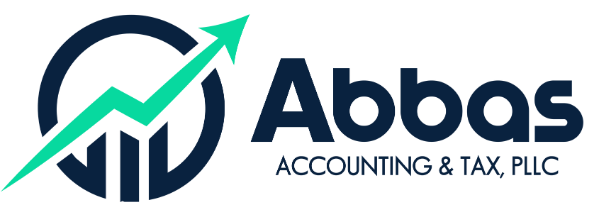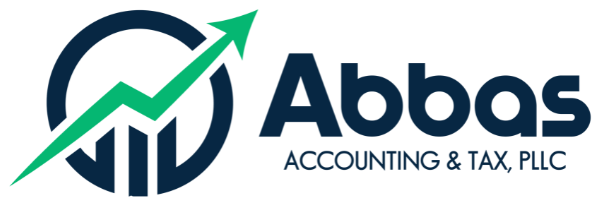Financial Planning Tips for Small Business Owners in Texas
Effective financial planning is the backbone of sustainable small business growth. In 2025, Texas business owners must adopt strategic budgeting, cash-flow forecasting, and tax-smart practices to stay ahead. Explore these powerful tips, complete with trending tools and money-saving strategies—for a successful year.
Financial Best Practices for Small Businesses
- 1. Build a Realistic Budget & Forecast Cash Flow
Forecast income and expenses monthly. Tools like QuickBooks Online or Xero help you visualize runway and pinpoint cash flow pinch points early.
- 2. Track Key Financial KPIs Regularly
Monitor metrics like gross margin, burn rate, and A/R aging. See how deductions and credits impact profits in our Tax Deductions Guide.
- 3. Automate Your Bookkeeping
Use AI-powered apps like Expensify or HubDoc to sync transactions, capture receipts, and stay audit-ready, all while unlocking small-business tax deductions.
- 4. Plan for Quarterly Estimated Taxes
Estimate and pay taxes on income to avoid penalties. Use deductions from our Deductions Guide to reduce quarterly liability efficiently.
- 5. Build an Emergency Fund & Keep Business Savings
Set aside 3–6 months of recurring expenses. This fund ensures stability during off-seasons or unexpected expenses.
- 6. Contribute to Retirement Plans
Maximize tax savings and save for the future with SEP IRAs or Solo 401(k)s. Contributions (up to $69,000 in 2025) also lower your annual tax bill.
- 7. Reinvest in Your Business Smartly
Use profits to invest in marketing, technology, or employee development. Many of these expenses are deductible—see our 2025 Deduction Guide.
- 8. Review Insurance & Risk Management
Ensure you’re covered with liability, property, and cyber insurance. These premiums may be deductible and protect your business from unexpected loss.
- 9. Schedule Regular CPA Check-Ins
Connect quarterly with your CPA to strategize tax planning, entity formation, and growth. Book a free consultation with Abbas Accounting & Tax, PLLC.
Pro Tips to Level Up
- 📈 Use cloud-based dashboards to monitor finances daily.
- ⚙️ Leverage software integrations (e.g., payroll, invoicing).
- 🧠 Regularly adjust forecasts based on actual performance.
FAQs
Q: How much should I save each month?
A: Aim to save at least 10–20% of monthly revenue into an emergency or growth fund.
Q: Can I combine business savings and personal retirement?
A: Keep retirement accounts and operating savings separate to simplify accounting and safeguard funds.
Conclusion
Strategic financial planning empowers Texas small business owners to reduce risk, optimize taxes, and drive profitable growth. In 2025, adopt these best practices, automated bookkeeping, forecasting, and regular CPA reviews and watch your business thrive.
Schedule a free financial strategy session with Abbas Accounting & Tax, PLLC
Related Posts

Understanding Small Business Tax Deductions
Explore how deductions like home office, Section 179, and QBI can lower your 2025 tax bill.
Read More
Quarterly Bookkeeping Tips for Texas Businesses
Stay consistent by following our quarterly bookkeeping checklist for better financial control.
Read MoreEXCELLENTTrustindex verifies that the original source of the review is Google. Haider is an exceptional accountant. His CPA background and exceptional knowledge of the US tax code has been a great asset to my businesses. His work is very clean and thorough, while always making an effort to communicate with me each step of the way. I would highly recommend him for anyone looking to grow their business!Trustindex verifies that the original source of the review is Google. My husband and I can not tell you how grateful we are for Abbas Accounting & Tax. Haider is so helpful and very very knowledgeable. So many of our neighbors recommended him and we are glad we reached out. We now feel confident and actually have an understanding on how we SHOULD fill out our W4 and our taxes. We finally have a trusted tax & accounting expert that we will continue to utilize every year! Thank you!Trustindex verifies that the original source of the review is Google. I had an excellent experience with Abbas Accounting & Tax in Richmond. Their team is professional, knowledgeable, and genuinely cares about helping their clients. Haider Abbas made the process simple and stress-free, providing clear explanations every step of the way. Their expertise saved me both time and money on my taxes. I highly recommend Abbas Accounting & Tax to anyone seeking reliable, trustworthy, and friendly accounting services.Trustindex verifies that the original source of the review is Google. Haider has been incredibly helpful in guiding me through my tax filing process and helping me understand the advantages available to me. He took the time to explain everything clearly, making sure I was informed and confident in my decisions. Beyond just taxes, Haider also provided valuable insights into forming my LLC, helping me structure it in a way that benefits me both financially and legally. His expertise, professionalism, and willingness to go the extra mile truly set him apart.Trustindex verifies that the original source of the review is Google. I've known Haider Abbas for many years, and I can confidently say he is one of the most knowledgeable and trustworthy CPAs out there. He genuinely cares about his clients and takes the time to explain everything in a way that makes sense. Whether it’s tax preparation, accounting, or financial advice, he goes above and beyond to ensure accuracy and maximize savings. His professionalism, attention to detail, and commitment to client success truly set him apart. If you're looking for a reliable CPA who will always have your best interests in mind, especially when tax season is upon us, I highly recommend Abbas Accounting & Tax!Trustindex verifies that the original source of the review is Google. He’s done our taxes for over ten years and has saved us so much money every year. Haider has great knowledge and expertise with the ability to communicate effectively and adapt to our needs. It has been a pleasure working with him for over a decade! Highly recommend.Trustindex verifies that the original source of the review is Google. Best place to get your taxes done. Haider has great knowledge & expertise to handle your business or personal taxes.Trustindex verifies that the original source of the review is Google. Great service. Haider Abbas explains taxes in a simple manner and helps to make sure you are getting your full refund, by knowing the tax laws so well. Would highly recommend to everyone!Verified by TrustindexTrustindex verified badge is the Universal Symbol of Trust. Only the greatest companies can get the verified badge who has a review score above 4.5, based on customer reviews over the past 12 months. Read more



[…] tools, Google Ads, and website maintenance qualify. Backlink here: our Financial Planning guide covers ROI tracking […]